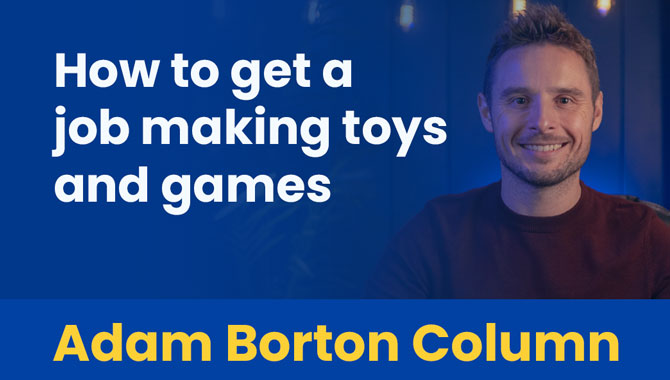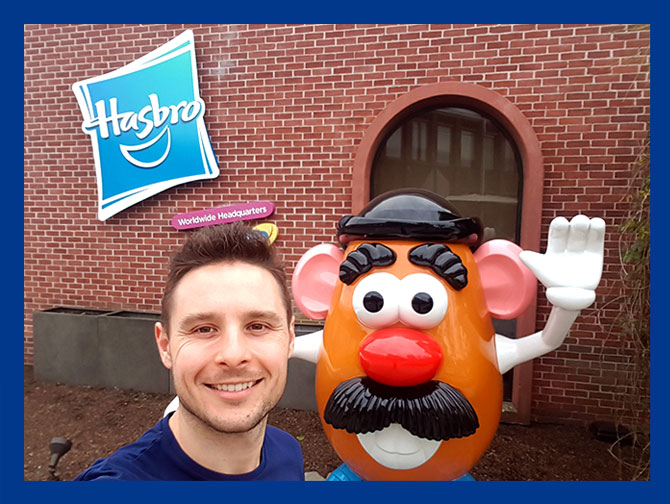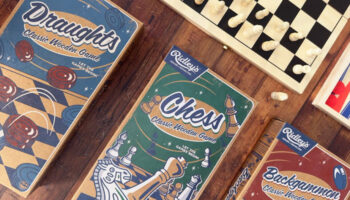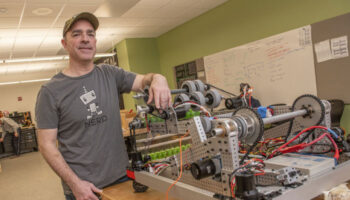How to get a job making toys and games

There are lots of jobs involved in the making and selling of toys and games, from illustration and engineering to sales and marketing. All of these jobs help to give the product a better chance of being successful, but I’m going to focus on the actual creation of the toy or game.
Start with a passion for creating and making. You should enjoy taking an idea from ‘nothing’ to ‘something’. That could be simply drawing the idea out on a page or physically putting parts together to make something. If you’ve got that interest, then it’s a great foundation for everything else that you’ll do!
Ask ‘why?’ Curiosity and wonder are valuable attributes to have when you’re making toys and games. You’re constantly going into the unknown, using your imagination to create things that haven’t existed before. If you accept everything at face value, then you won’t be able to go behind the curtain to understand what’s really going on. Toys and games are a fashion business, meaning that they come and go, and many are built on hype and sales. Hype and sales put a positive spin on everything when the reality is often very different!
For example, why are there not many toys and games with digital apps? Companies have tried – and hyped – digital apps for toys and games but they generally haven’t worked. Why? You could say that’s because the right solution hasn’t been created. Or you could dig a little deeper and understand that people don’t want to buy a low-cost toy or game and need to have a phone or tablet to hand just to play with it.
They need to get their device out, make sure it’s charged, open an app – which needs to constantly be updated for compatibility with different devices – and then use it whilst playing. Most people don’t want the hassle, especially for toys and games which are designed to be physical, tactile and promote social interaction.
You should also have an interest in the business side when you’re creating toys and games. You don’t have to be passionate about business, but you need to be aware of it and keep it in your mind.
You’ll be looking for the right balance between features and price whilst also looking at the competition – so what you’re creating offers value compared to other products out there. For example, you could create the best fidget spinner ever, but if you sold it for $1000, there wouldn’t be too many customers.
The toy and game industry is built on ‘stack ’em high, sell ’em low’, which means you mass produce them and sell them for a low price. You only make a small amount from each one but if you sell millions of them, then it’s a good business to be in.
Next, we’ll get onto the skills that are needed and valued for jobs in toys and games.
For toys, the main skills needed are visual communication and an ability to ‘make it work’.
Illustration – Illustration is a very artistic job that needs a strong foundation in drawing. You’ll need to learn the fundamentals of perspective, anatomy, light and composition. Toy and game illustration often has a specific style too – if it looks too realistic, it won’t look fun and appealing. Cartoons and animation are great references to study as they have relevant styles.
Illustrators also need to tell the story of the product, which often includes character design too. If you can accurately draw in 3D with perspective and also draw side-on, top and front views (orthographics/turnarounds) then you’ll have a strong case for employment.
Engineering – Making a toy work, making it safe and making it ready for manufacture is the job of an engineer. Engineers working at toy and game companies are usually college-educated because it requires very specific training on the theoretical and practical areas of engineering products. Many engineering courses don’t teach visual presentation though, so if you’re an engineer looking for a job in toys, the best way to get attention is to make a compelling sizzle video of your work in a quick, easy-to-understand way.
It’s still possible to get a job as an Engineer in toys and games without a degree though. You’ll need to prove you can create fully working prototypes which have cool mechanisms that can be manufactured for a low cost. Learning Solidworks or Fusion360 is a great first step.
Sculpting – Sculpting usually comes after a sketch or illustration has been created of the concept. It can come before, after or during the engineering phase. With toys, sculpts are usually organic and freeform so it’s best to use a program such as Zbrush to create them rather than Fusion360 or Solidworks.
Having a basic understanding of manufacturing helps too, such as how plastic molds are made. This means you’ll know what parts of the toy can be manufactured and how to adapt a design so that it can be made in a factory. For creating toys such as action figures, you’ll also need to know human anatomy so that you know where muscles go and how they look.
For games, you’ll need an understanding of how to create fun, replayable gameplay as well as making the game look great too.
Gameplay – Creating interesting and fun gameplay comes from studying the fundamentals of game design – while also playing a lot of games! Board games, which have many different categories, have lots of varied examples of great gameplay but so do video games and mobile games. You don’t need to do a degree in game design to learn how to make great gameplay, but you should dig into what makes games fun and replayable.
Illustration – Illustration for games is very similar to toys. The fundamentals will be the same although the illustration style can vary based on the type of game you’re creating. A pre-school game illustration style can be very different to an adult party game! Unless you’re creating plastic figures to go in the game, you probably won’t need to do turnarounds/orthographics of each figure or character. Having a grounding in graphic design principles will also definitely help when it comes to creating visuals for games.
All of these jobs need a portfolio to show off your work. Telling the story of how and why you made a toy or game is always the best way to present your work to potential employers. The higher the quality, the better your chances.
Today, videos have replaced PDFs as the most effective way to do this, although having a PDF of your work as well as a video is the best strategy.
Once you have a great portfolio, you then need to get your work in front of the right people. LinkedIn is a great place for networking and sending speculative messages with a portfolio link attached. You can also attend events such Mojo Nation’s Play Creators Conference, People of Play or a Toy Fair to meet some of the decision makers in person!
If you have a toy or game portfolio and want to get my feedback on how it can be improved, send me an email [email protected] and I’d be happy to give you some pointers – although please don’t send confidential work without a signed NDA.

—
To stay in the loop with the latest news, interviews and features from the world of toy and game design, sign up to our weekly newsletter here























